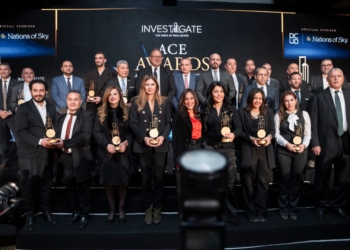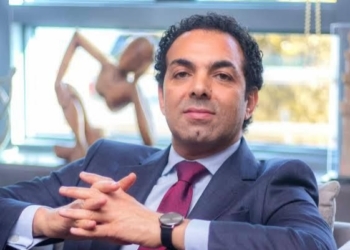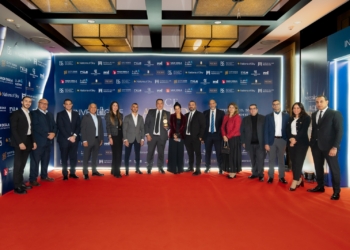Building upon the compelling exploration of Winged Creatures in Greek Myths and Modern Symbols, it becomes evident that wings serve as a universal icon transcending time and culture. From the divine messengers of ancient Egypt to contemporary representations in digital art, the symbolism of wings encapsulates ideas of transcendence, aspiration, and spiritual elevation. This article delves into the expansive journey of winged symbols, illustrating their profound significance across human history and their evolving role in contemporary culture.
Prehistoric and Ancient Civilizations: Early Manifestations of Winged Symbols
The earliest evidence of winged symbols appears in prehistoric art and artifacts, where motifs of wings were used to convey spiritual and supernatural significance. Cave paintings from Paleolithic sites, such as those in Chauvet and Lascaux, include abstract depictions of winged creatures, suggesting an early fascination with flight and divine power. These primitive representations likely served ritualistic or shamanic purposes, embodying a connection to the spiritual realm.
In ancient civilizations, wings took on more defined symbolic roles. Egyptian mythology, for instance, features deities like Isis and Hathor often depicted with wings, symbolizing protection and divine authority. The winged sun disk, a common motif in Egyptian art, represented the sun god Ra’s power and the concept of eternal life.
| Culture | Winged Symbol Examples | Significance |
|---|---|---|
| Egyptian | Winged Sun Disk, Hathor’s Wings | Protection, divine authority, eternal life |
| Mesopotamian | Lamassu (winged bulls), Anzu (bird demon) | Guardianship, divine power |
The Middle Ages and Renaissance: Religious and Artistic Reinterpretations
During the Middle Ages, winged symbols gained prominence in Christian iconography. Angels, often depicted with expansive, feathered wings, served as messengers of God, embodying purity, divine communication, and protection. These representations appeared extensively in illuminated manuscripts, stained glass, and sculpture, reinforcing the spiritual importance of wings.
The Renaissance period saw a renewed interest in classical themes and a sophisticated exploration of winged imagery. Artists like Leonardo da Vinci studied the anatomy of birds and humans to render realistic wings, emphasizing their symbolic role in human aspiration and transcendence. Paintings of winged figures, such as Icarus or the angelic hosts, reflected a fascination with the human desire to reach beyond earthly bounds.
Artistic Innovations and Symbolism
Innovations during this era included the depiction of wings as dynamic, flowing forms that symbolized spiritual ascent. The use of gold leaf and intricate detailing in illuminated manuscripts and sculptures elevated wings from mere motif to a symbol of divine grace and human aspiration.
Wings in Literature and Mythology: From Mythic Motifs to Literary Devices
Literature across cultures has long used winged beings to symbolize ideas of aspiration, freedom, and transcendence. In Greek mythology, Icarus’s wings represented human hubris and the desire to defy limits, while in Asian stories, phoenixes symbolize rebirth and immortality.
Modern authors frequently employ winged characters as allegories for personal growth or spiritual awakening. For example, in literary symbolism, wings often serve as metaphors for the desire to rise above challenges or to attain enlightenment.
- Transcendence: Wings enabling characters to move beyond physical and metaphorical boundaries.
- Transformation: Symbolizing rebirth or spiritual evolution, as seen in the myth of the phoenix.
- Ambition and Aspiration: The desire to reach higher realms, often associated with personal or divine goals.
Modern Art and Popular Culture: Reimagining Winged Symbols in Contemporary Contexts
In the 20th and 21st centuries, artists have explored wings through abstract and surrealist lenses, emphasizing their symbolic potential in new ways. Works by Salvador Dalí and Yves Klein, for instance, depict wings as fluid, dream-like forms that challenge traditional representations.
Wings have become prominent in film, fashion, and digital media as symbols of identity, liberation, and the quest for freedom. Superheroes like Captain Marvel or Iron Man incorporate winged motifs to evoke power and transcendence. Similarly, fashion designers incorporate feathered and wing-inspired elements to evoke elegance and aspiration.
The commercialization of winged imagery has led to its widespread use in branding, often representing agility, speed, or divine quality. This commodification, while popular, raises questions about the dilution of its deeper symbolic meanings.
Scientific and Technological Perspectives: The Quest to Attach Wings to Human Reach
Advances in bioengineering have spurred the development of wearable wing concepts, such as exoskeletons that mimic bird wings, aiming to enhance human mobility and enable flight-like experiences. Researchers at institutions like Harvard and MIT are experimenting with lightweight materials and robotic systems to create functional winged devices.
The influence of aviation technology also shapes symbolic representations. Early aircraft designs borrowed from bird anatomy, emphasizing wings as symbols of human ingenuity and the pursuit of the impossible. The Wright brothers’ pioneering flights exemplify the aspiration embodied in winged symbols—bridging myth and technology.
“The human desire to emulate flight reflects a deep-seated longing for transcendence, a recurring theme that unites ancient myth with modern science.”
The Future of Winged Symbols in Art and Culture
Emerging technologies like virtual reality (VR) and augmented reality (AR) are opening new dimensions for winged symbolism. Virtual environments can allow users to experience wings as interactive, immersive elements, fostering a sense of freedom and transcendence beyond physical limitations.
As society continues to evolve, new symbolic meanings may emerge—such as representing digital identity or global interconnectedness. Wings could symbolize the boundless potential of humanity in cyberspace, fostering cross-cultural dialogue and shared aspirations.
Bridging the Past and Future: Reconnecting with the Parent Theme
Reflecting on the enduring symbolism of winged creatures shows how deeply rooted these motifs are in human consciousness. From the mythic wings of Greek gods and angels to their reinterpretation in modern media, wings symbolize our perpetual quest for higher understanding and liberation.
Modern reinterpretations continue to draw inspiration from classical archetypes, showcasing a dynamic dialogue between tradition and innovation. Recognizing this evolution underscores the importance of understanding historical symbolism to appreciate and shape future representations of wings in art and culture.
In essence, wings serve as a timeless bridge—linking ancient mythologies [Winged Creatures in Greek Myths and Modern Symbols]—to contemporary dreams of limitless human potential.
الرابط المختصر: https://propertypluseg.com/?p=156402






















